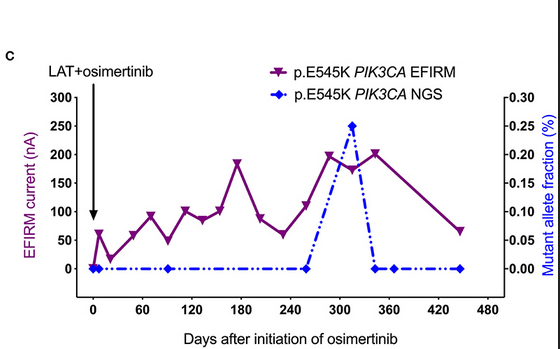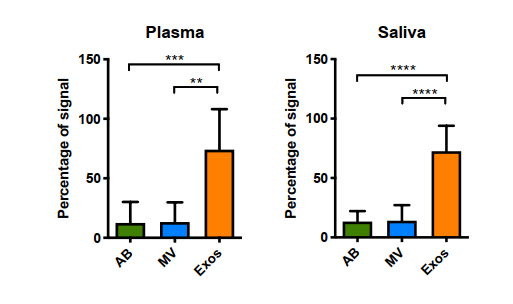EFIRM for Lung Cancer: Latest Update (3 Papers)
By EZLife Bio on July 24, 2020
Three exciting new papers have been published on the EFIRM technology, continuing to show EFIRM’s immense viability as a tool for liquid biopsy of cancer.
EFIRM for Monitoring of Lung Cancer Mutations
In a work spearheaded by Dr. Ning Li[1] in collaboration with the NIH/National Cancer Institute, EFIRM was used to monitor the PIK3CA gene variant in a lung cancer patients from saliva over 400 days.
EFIRM was able to sensitively and accurate mirror the results of other technologies such as NGS and ddPCR. While other technologies require labor-intensive DNA extraction and amplification for measurement of PICK3CA variants, EFIRM is able to rapidly detect changes in the variant levels directly from a drop of saliva.

Figure from Li et al. in Frontiers of Oncology
EFIRM for detecting Ultra-Short Circulating Tumor DNA of Non-Small Cell Lung Cancer (NSCLC) Patients
Dr. Feng Li of the UCLA School of Dentistry recently performed a detailed evaluation of the profile of NSCLC patients using the EFIRM technology[2]. His discoveries include showing the unique profile of salivary tumor DNA and explorations of exosomes as the vehicle carrying lung cancer relating circulating tumor DNA. His groundbreaking investigations may be indicative of the underlying biology of lung cancer mutations and why saliva may be a highly useful diagnostic medium for detecting cancer.

Figure from Li et al. in Cancers
EFIRM for application as a clinical assay
A culmination of years of translational development, EFIRM has gone through rigorous evaluation and validation at multiple clinical laboratories. A recent publications spearheaded by Dr. Michael Tu and Dr. Jordan Cheng[3] demonstrate the viability of EFIRM as a tool for clinical diagnostics through a series of technical validations.
Link to Abstract in the Journal of Molecular Diagnostics
References Cited
[1] https://www.frontiersin.org/articles/10.3389/fonc.2020.01240/full
[2] https://www.mdpi.com/2072-6694/12/8/2041
[3] https://jmd.amjpathol.org/article/S1525-1578(20)30350-0/abstract